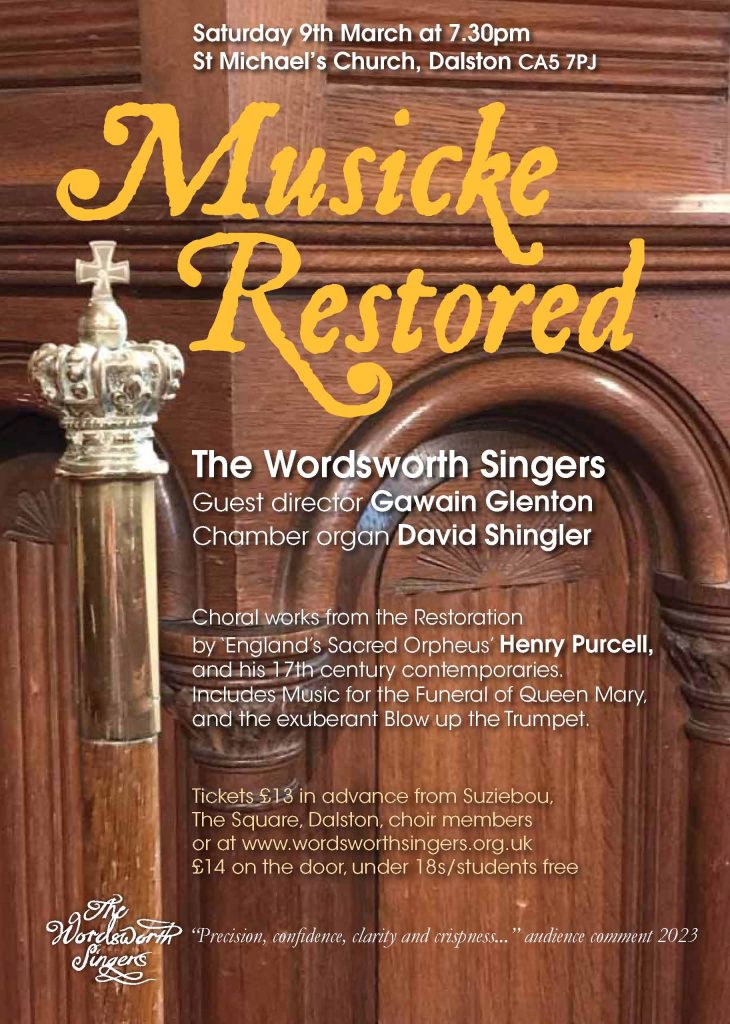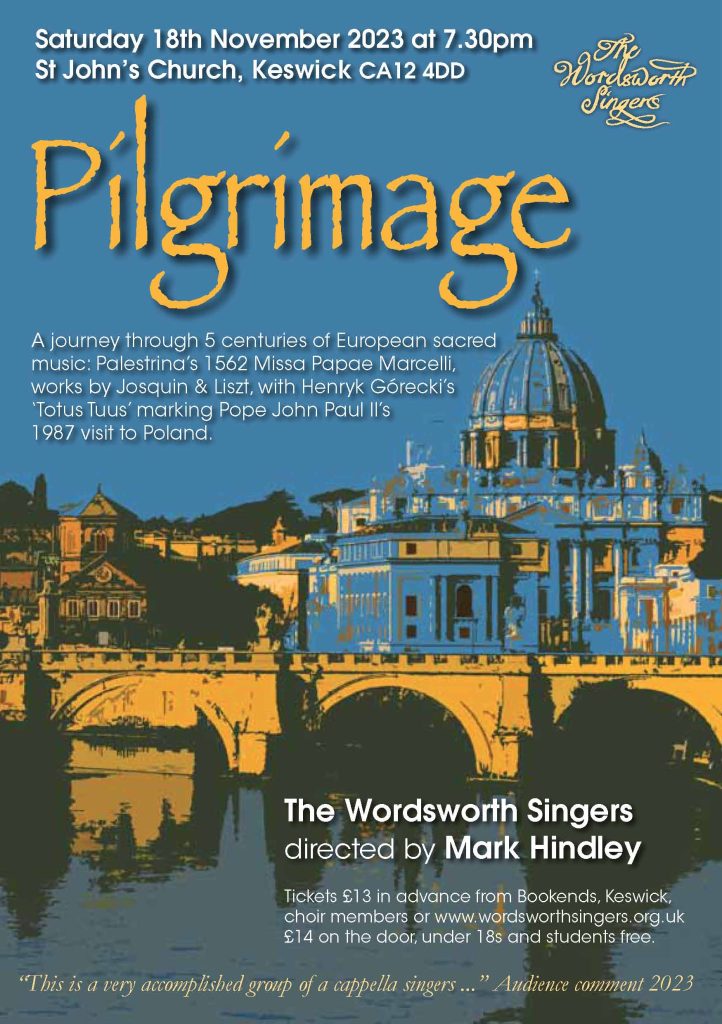
The Wordsworth Singers’ recent concert attracted a capacity audience to St Michael’s Church, Dalston despite a chilly Saturday evening. Under their guest director Gawain Glenton, their programme, Musicke Restored, was primarily a celebration of Henry Purcell, one of England’s greatest composers, and their selection of vocal music was aptly appropriate for the Lent season. The 30-strong choir gave heartfelt performances throughout the evening of some of Purcell’s most intense and profound works, and their suggestion to reserve applause until the end of each half enabled the music and mood to flow uninterrupted without breaking the spell. The opening Jehova, quam multi sunt hostes mei set the tone for the whole evening with powerful dynamic contrasts, and effective and stylish phrasing. Vocal dexterity was much in evidence throughout with clarity in the polyphonic lines, and good diction pervading. Purcell’s short yet beautiful Hear my prayer, O Lord set a suitably sombre mood with the intensity of its build-up memorable. Opportunities for colourful word-painting were seized notably in the selection from the Funeral Sentences and Music on the Death of Queen Mary while Purcell’s characteristic dissonances were keenly felt in Blow up the trumpet in Sion. By way of stylistic contrast, Salvator mundi, salva nos by Purcell’s teacher, John Blow gave the Wordsworth Singers additional opportunities for vocal colour, with Purcell’s near contemporary, William Croft lightening the mood in a confident performance of God is gone up with a merry noise. Three short organ interludes revealed David Shingler’s neat ornamentation and offered a moment of respite for the voices. The final work, Purcell’s Remember not, Lord, our offences provided a reflective note on which to end what had been a most enjoyable and well-prepared concert.

On a cold, wet November’s evening the Wordsworth Singers transported us to Italy for a programme of unaccompanied choral music entitled “Pilgrimage”. Once again the choir’s musical director Mark Hindley gave the audience and singers a challenging and interesting programme, much of which was unknown to me. The concert opened with a performance of the 16th century composer Giovanni Palestrina’s monumental “Missa Papae Marcelli” written in 1562 in memory of Marcellus II who was Pope for only 22 days in 1555. Of course such a work was never intended for concert performance and when sung liturgically there would have been lengthy breaks between the movements so that the singers would have a rest. To sing all the movements without a break takes well over 30 minutes and is a test of musicality, stamina and concentration. In particular sustaining high musical lines in both the Soprano and Tenor parts is extremely difficult and it was obvious, and to be expected, that voices were beginning to flag by the last movement, Agnus Dei. The Wordsworth Singers made the most sublime rich sound which filled St.John’s Church Keswick. However, I would have liked a little more light and shade as at times the sustained loud singing became overwhelming, especially since the balance of voices at times was uneven. The beautiful soft singing at the start of the “Credo” and in the “Benedictus” came as a delightful contrast. Perhaps in a future unaccompanied concert the choir might consider performing from the Sanctuary area, where there is plenty of space for them to stand and the audience would not feel the choir on top of them so much.
Creditable though the Palestrina was I felt that the Wordsworth Singers were more at home in the second half of the concert and we heard them almost at their very best, though I will never forget their very special performance of Bach’s “Mass in b minor” in the same church. The music of the late fifteenth early 16th century composer Josquin des Prez would have been unfamiliar to most of the audience. The two motets “Ave Maria” and “Benedicta es, caelorum Regina” were enchantingly sung. There was a wonderful clarity of singing and everything was beautifully shaped and phrased. The almost bell-like tone of the sopranos floated in the wonderful acoustics of the church. The nineteenth century Hungarian pianist and composer Franz Liszt is not so much associated with choral music and his “Pater noster”, composed in 1866, comes from his oratorio, “Christus”. Here we were aware of a wonderful warm glowing tone from the choir and there was a rich variety of dynamics, though once again the balance of voices was not always ideal. However, there were some beautiful soft moments. The ending of the piece with the sopranos high in their register then dying away was particularly effective.
For me the highlight of the concert was the last item “Totus Tuus” by the twentieth century Polish composer Henryck Górecki. The impact of the loud opening bars contrasting with a quiet section was almost breathtaking. This is a difficult work with constantly shifting tonalities which makes it difficult for the singers to maintain a sense of pitch. However, I found that I had to put my reviewer’s pen down, close my eyes and just wallow in this sublime sound that this extremely fine choir can produce.
